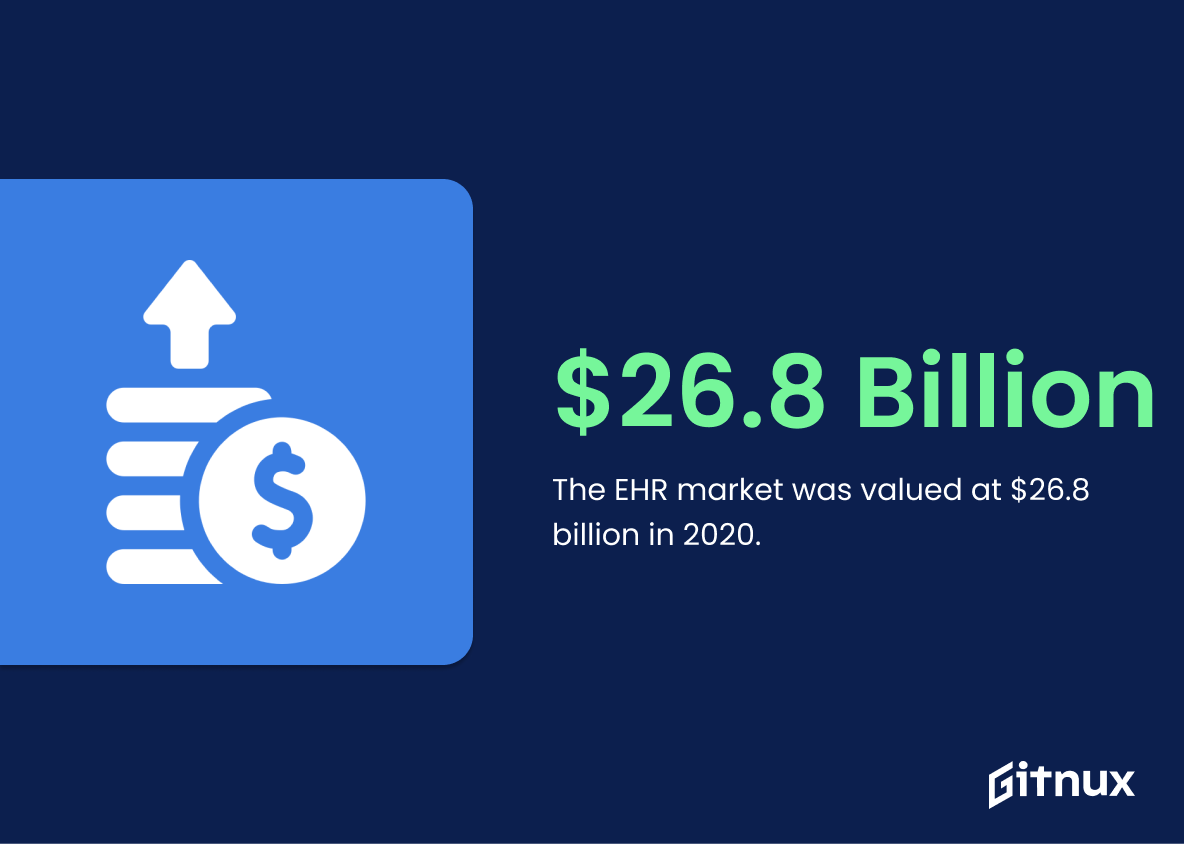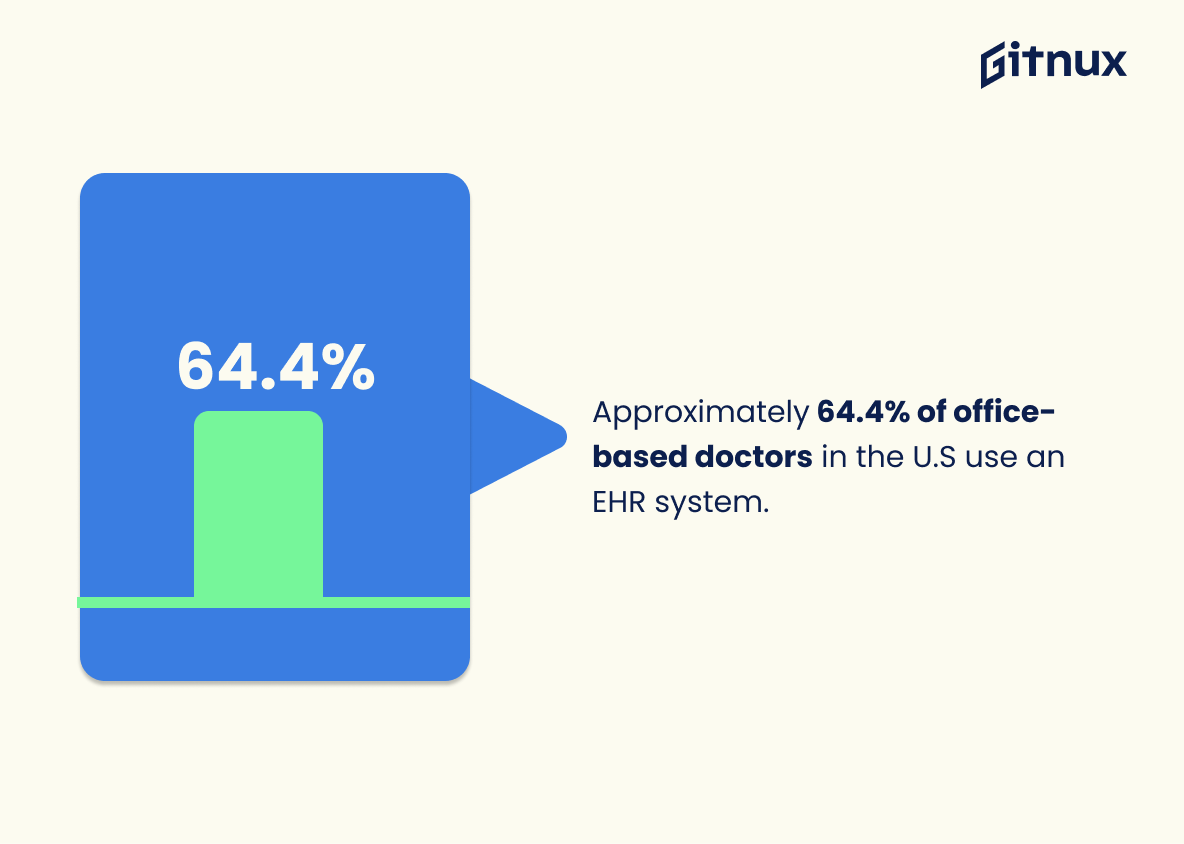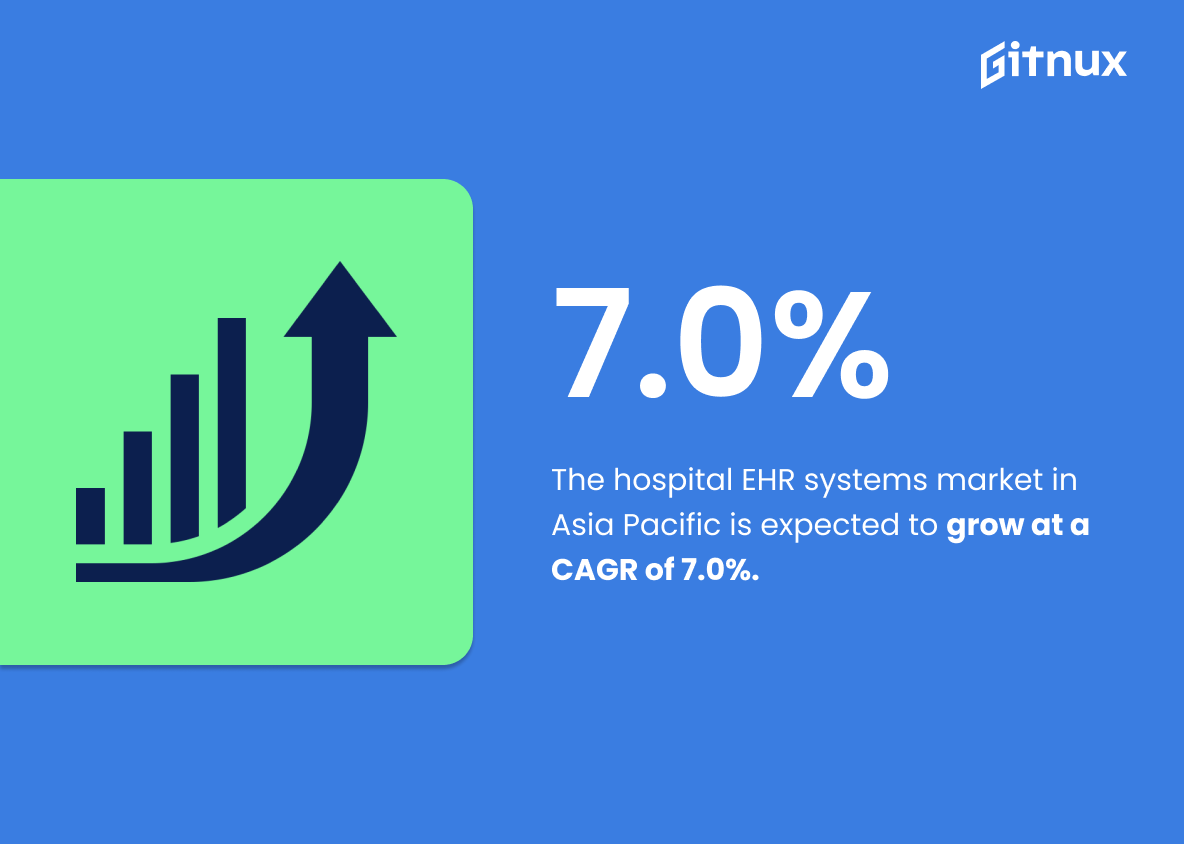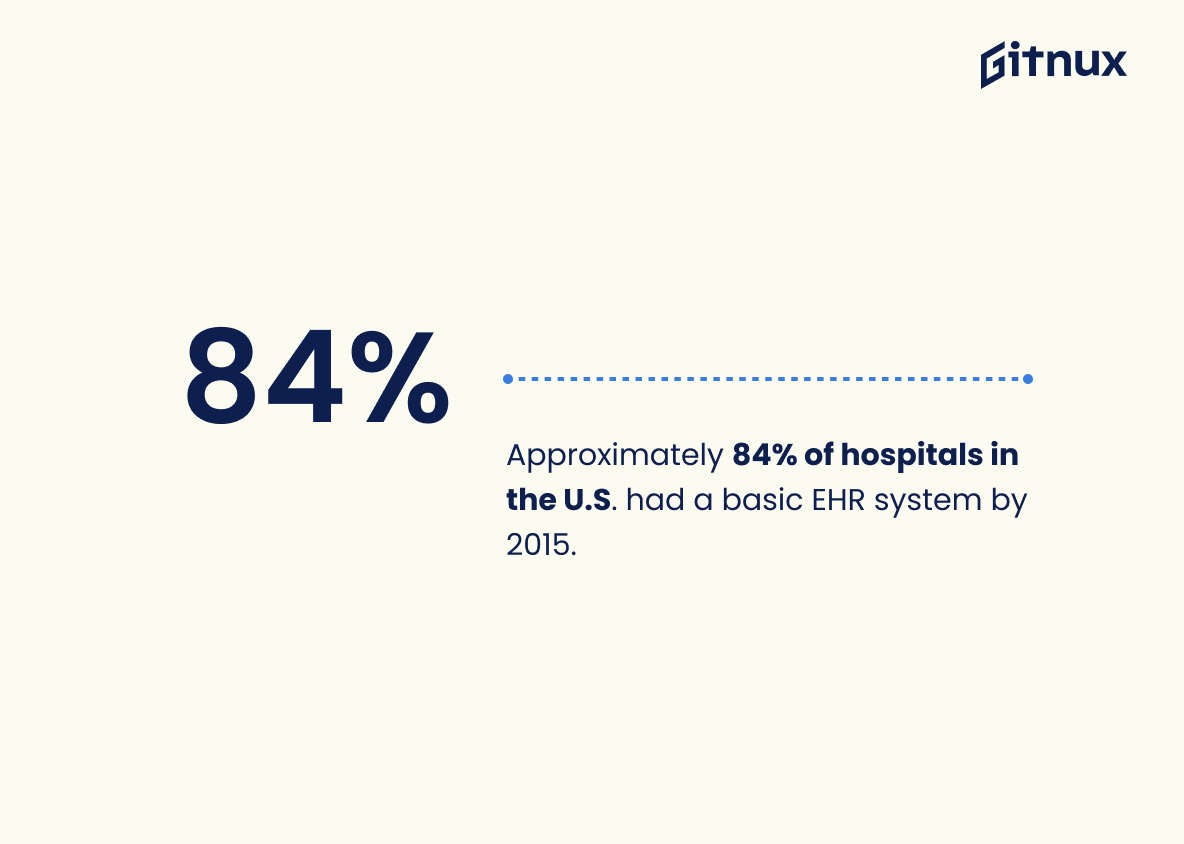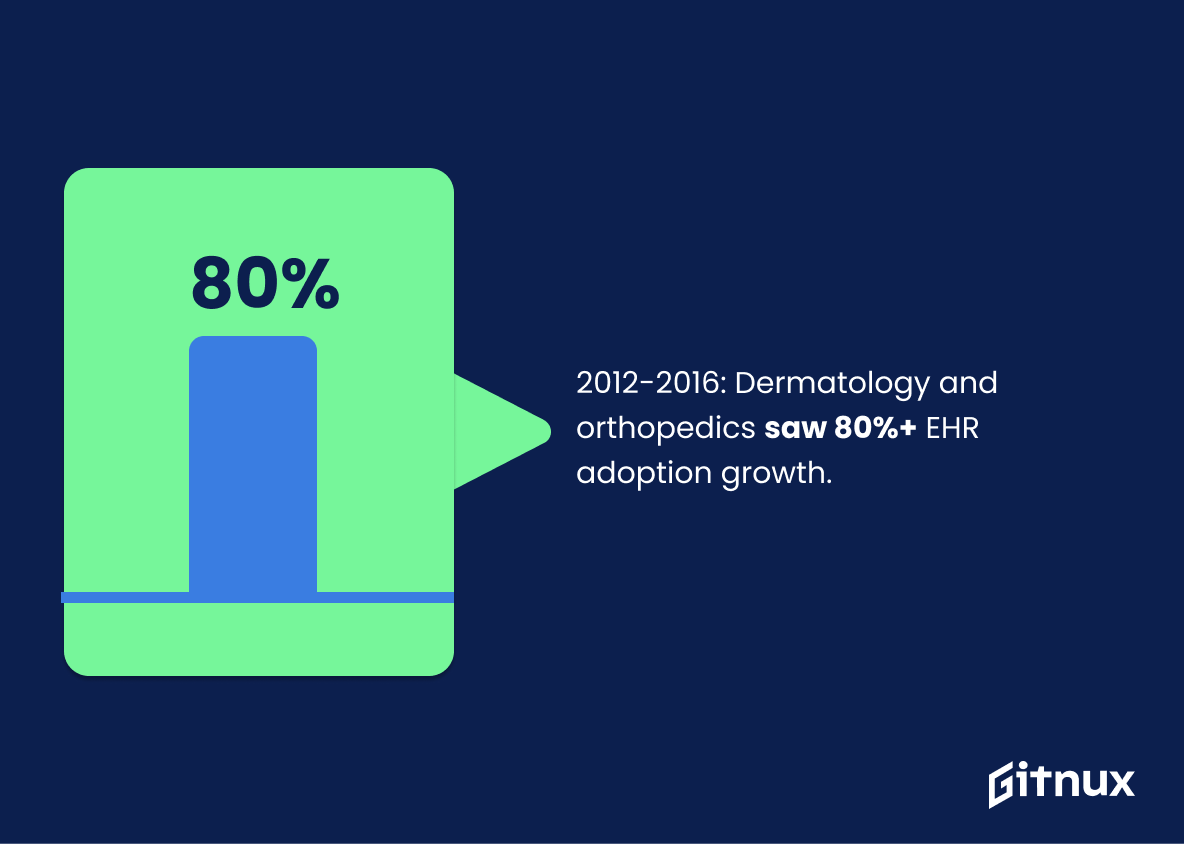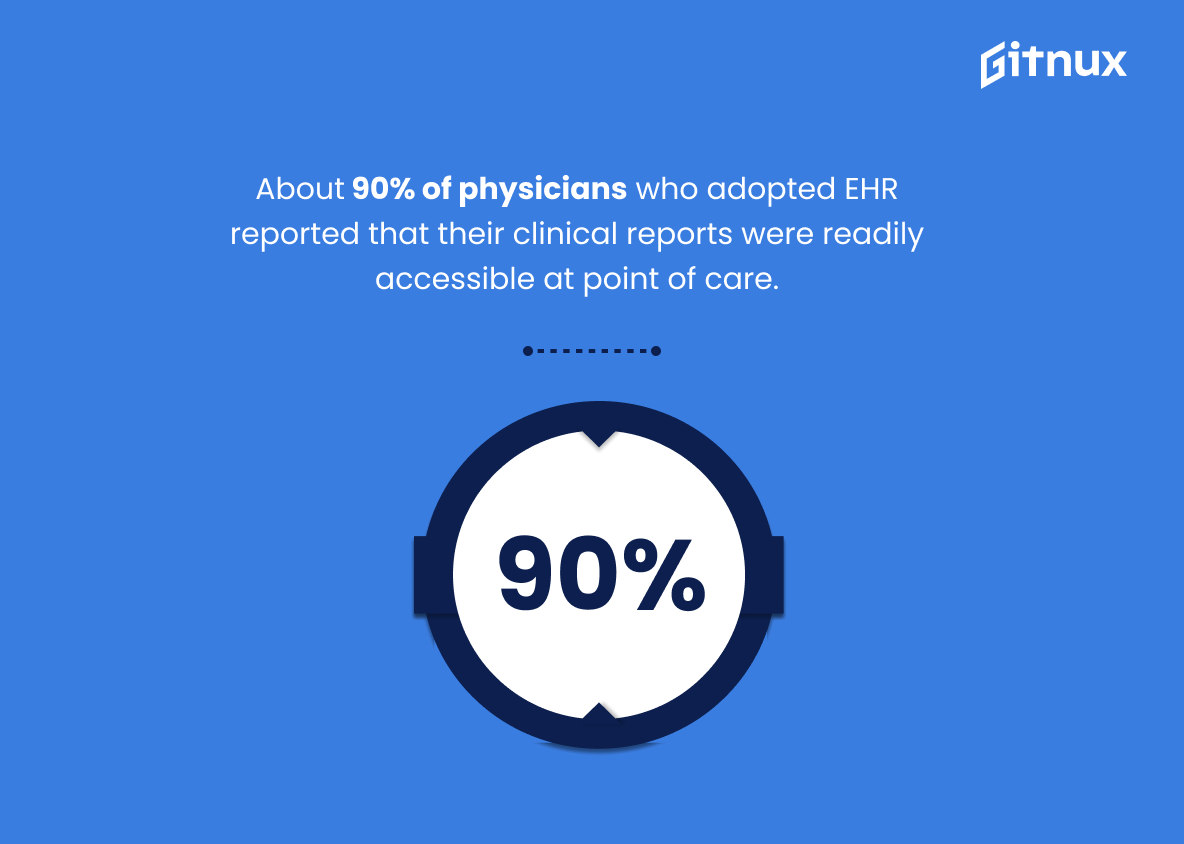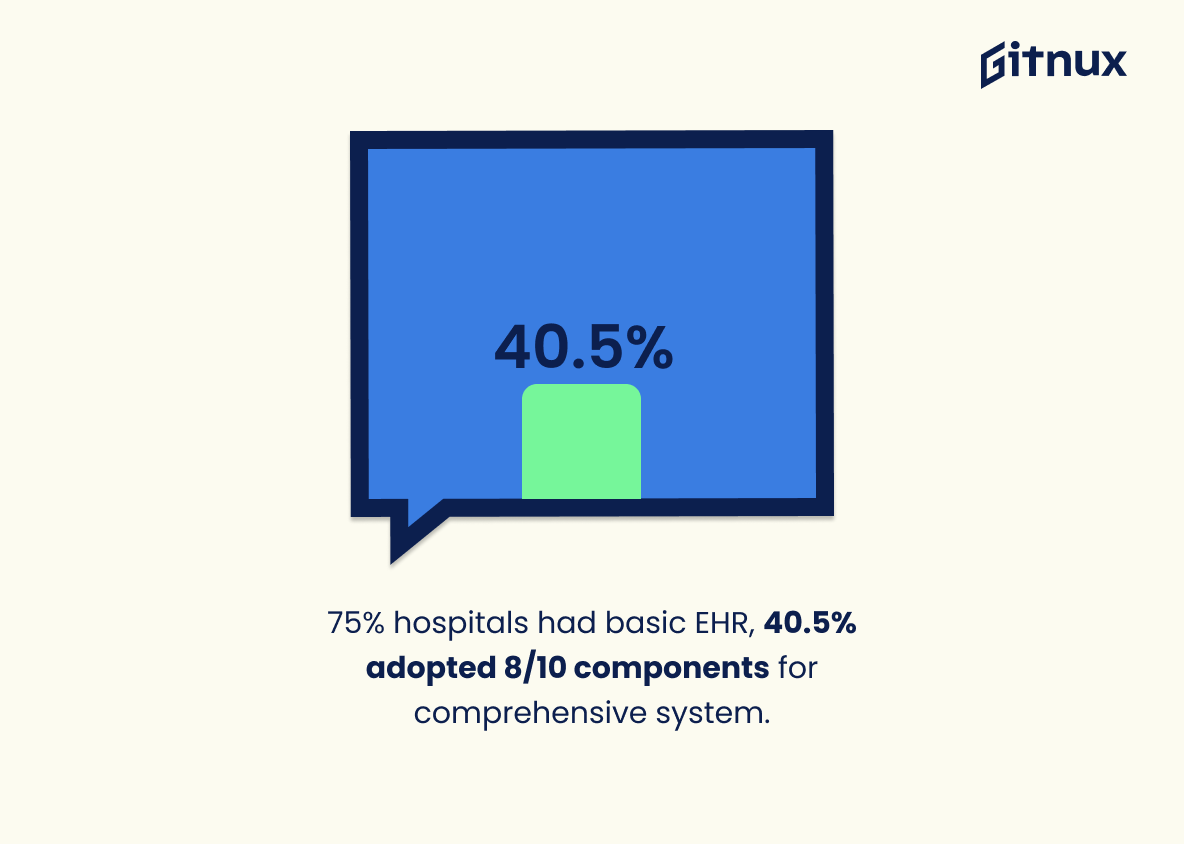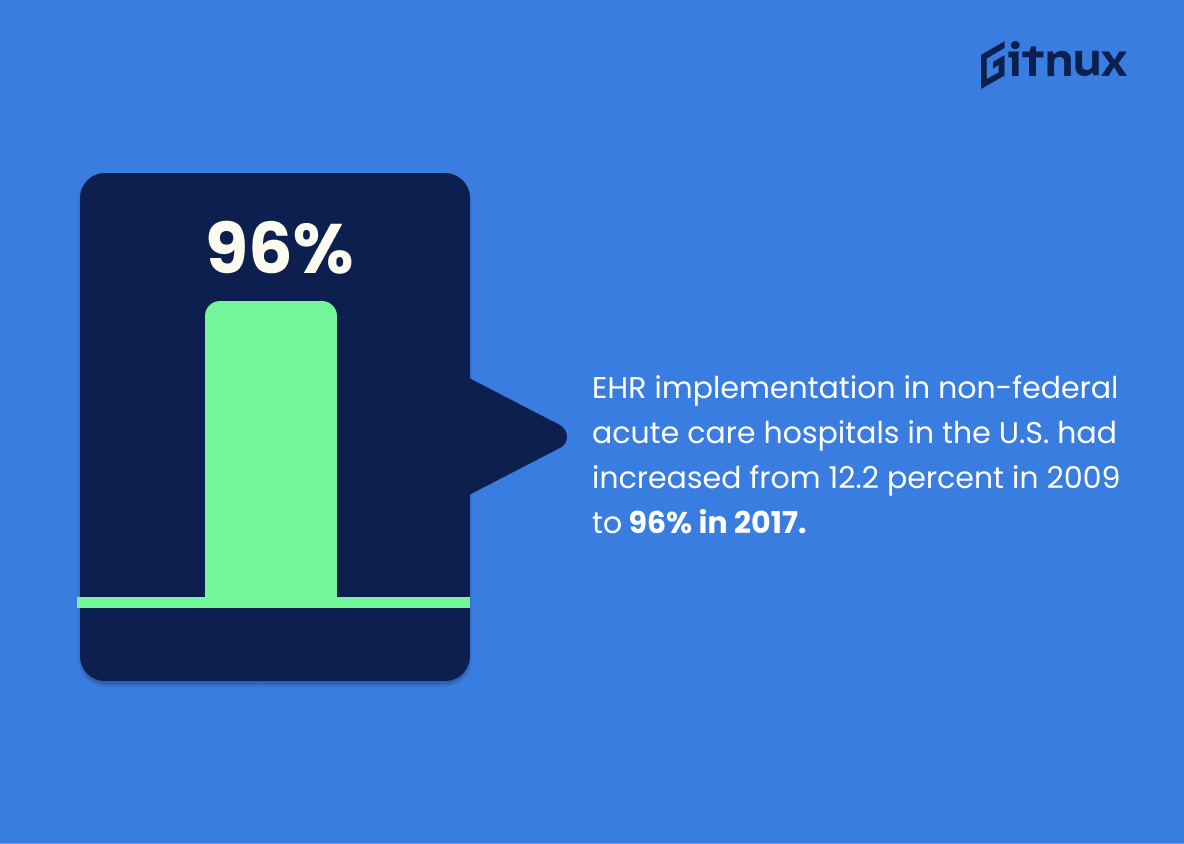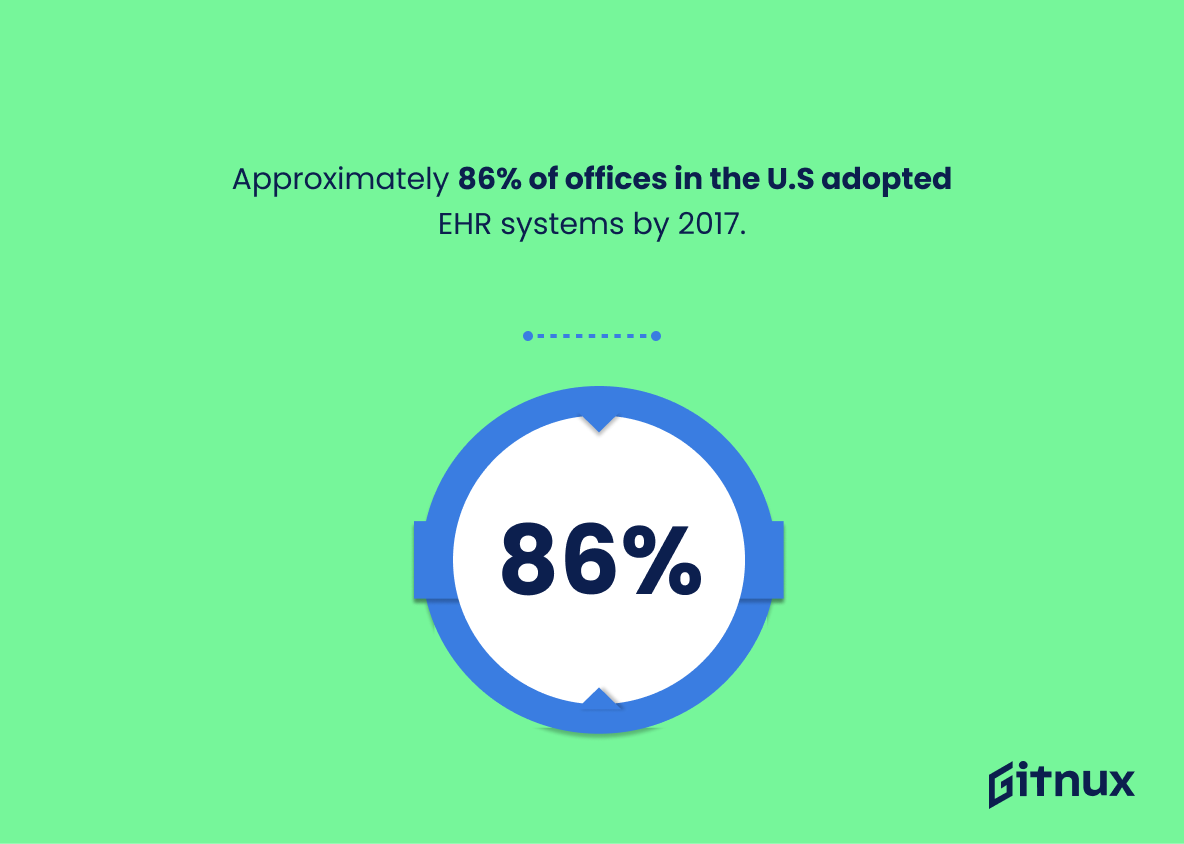In today’s digital healthcare landscape, electronic health records (EHR) have fundamentally transformed the way patient information is managed and shared. Taking point in streamlining processes, improving efficiency, and enhancing patient care, EHR systems have become a cornerstone in modern healthcare practices.
However, to truly appreciate the growth and impact of EHR, one must delve deep into the ever-flourishing EHR industry statistics. Join us as we navigate through these engaging numbers to not just comprehend the current state of play, but also to discern patterns that might dictate the future of this technological marvel in healthcare.
The Latest EHR Industry Statistics Unveiled
The EHR market was valued at $26.8 billion in 2020.
Highlighted as a key data point, the valuation of the EHR market at $26.8 billion in 2020 serves as a monetary representation of the industry’s significance and growth potential. It erects a statuary pillar symbolizing the immense economic reach of the EHR industry, resonating with its increasing global importance.
The figure envelops within itself an intricate tale of technological advancements, government support, and rising health consciousness catalyzing a surge in the information technology healthcare sector. Furthermore, it stands as a robust financial milestone, lending insight into future market trends and investment potential.
The global EHR market is expected to reach $38.3 billion by 2026.
As we delve into the terrain of EHR industry statistics, we cannot overlook a pivotal forecast that bids the global EHR market to touch a towering height of $38.3 billion by 2026. This prediction forms the lifeblood of our discussion, underpinning the stellar potential and rapid growth trajectory this industry is set on.
This monetary projection mirrors not only the financial magnification, but also the rising adoption and deeper integration of EHRs in healthcare facilities worldwide, underscoring the vital role they will play in transforming the future of patient care. This compelling figure is hence, the beacon not just signifying the prosperity the sector is poised for, but it also serves as a metric indicating the degree to which EHRs will influence and reformat health systems across the globe.
North America dominates the global EHR market with a share of over 45%.
The statistic that North America has a whopping share of over 45% in the global EHR market casts a revelatory light on the pivotal role this region plays in the Electronic Health Record (EHR) space. In the grand theater of EHR Industry Statistics, it’s as if North America is taking center stage, setting the tone and guiding the performance.
Such a commanding stake suggests a melting pot of innovation, application, and strategization, shaping the future direction of the EHR landscape and influencing EHR trends globally. The robust growth of the EHR market in North America underlines the region’s readiness to embrace technological advancements, illuminating key insights for businesses’ strategic decisions and offering various stakeholders a deeper understanding of the market dynamics at play.
Approximately 64.4% of office-based doctors in the U.S use an EHR system.
Shedding light on the intriguing world of EHR Industry Statistics, let’s delve into the fact that around 64.4% of office-based doctors in the U.S rely on an Electronic Health Record (EHR) system. This statistic no doubt underscores the integral role of EHR systems within the contemporary medical landscape. It offers a testament to the digital transformation in healthcare, punctuating that more than half of the doctors have transitioned from traditional paper records to EHR systems.
This transition vividly paints a picture of an industry on an upward trajectory, promising growth and inherent potential in the intersection of healthcare and technology. It also offers a compelling snapshot of the marketplace, important for potential investors and stakeholders eyeing this particular sector. Thus, this statistic serves as a vibrant thread in the fabric of our narrative on EHR Industry Statistics.
Only 10.9% of hospitals in US had implemented at least a basic EHR system by 2009.
Diving into the realm of EHR industry statistics, we uncover a compelling nugget of information – 2009 saw just a small fragment of US hospitals, a mere 10.9%, having implemented at least a basic EHR system. The significance of this statistic within the broader industry narrative is multifold, forming a crucial cornerstone of our understanding of industry trends, evolution, and foreseeing the pathway into the digital future.
Firstly, this statistic underscores the raw, early-stage reality of technological uptake within the healthcare domain at the time, enabling the discerning reader to appreciate the distance the sector has traveled technologically speaking over the last decade. Secondly, it frames the challenges and hurdles the industry confronted in encouraging EHR adoption amidst numerous concerns such as cost, cybersecurity, and learning curve anxieties.
Lastly, it serves as a benchmark against which we measure the phenomenal growth, adoption and innovation which have characterized this industry in the years since. The humble beginnings in 2009 amplify the illustration of the EHR industry’s technological revolution and the strides made, making this statistic a pivotal piece of the EHR adoption journey puzzle.
In essence, this statistic adds a rich layer of context and perspective to the blog post – a throwback to the humble beginnings that magnifies the scale of the evolution and innovation the EHR industry has witnessed.
The hospital EHR systems market in Asia Pacific is expected to grow at a CAGR of 7.0%.
Dipping into the realm of electronic health record (EHR) industry statistics, one cannot overlook the ascending trajectory of the hospital EHR systems market in Asia Pacific. An anticipated growth of 7.0% CAGR underscores the burgeoning demands for technological advancements in health systems, while simultaneously shining a spotlight on Asia Pacific as a vibrant healthcare innovation hub.
The implication is clear: there’s a compelling narrative unfurling on the continent, with substantial growth potential and emerging opportunities crying out for closer spotlight in any comprehensive EHR industry discourse.
In 2017, Cerner was the most used EHR vendor for hospitals in the U.S. at 24.6%.
Highlighting Cerner’s position as the leading EHR vendor in the U.S. with a usage of 24.6% in 2017 adds a unique perspective to any discussion about the EHR industry. Not only does it underscore Cerner’s dominance in a highly competitive market, but it also serves as an intriguing benchmark of success for other companies in the same sector.
This crystalline figure acts as a testament of the trust reposed in Cerner by hospitals across the country, allowing readers to appreciate the magnitude of the company’s influence in shaping the direction of the EHR industry.
Approximately 84% of hospitals in the U.S. had a basic EHR system by 2015.
Highlighting the statistic that by 2015, roughly 84% of U.S. hospitals had implemented a basic Electronic Health Record (EHR) system, underscores the significant growth and adaptation trends within the EHR industry. This surge in adoption demonstrates that almost all healthcare establishments have integrated digital technologies to increase efficiency and improve patient care.
As such, it signals a massive investment in digital transformation, indicative of the value placed on EHR systems in current healthcare administration. Unfolding this statistic in a blog post about EHR industry, therefore, invites readers to further understand the dramatic shift in healthcare landscape and appreciate the momentum that EHR industry carries into the future.
Between 2012 and 2016, dermatology and orthopedic segments displayed significant growth in EHR adoption, with over 80% increase.
Delving into this intriguing statistic, we unravel an unexpected trend in the EHR Industry. Circling back to the period between 2012 and 2016, the dermatology and orthopedic fields experienced a dramatic surge in EHR adoption, boasting an astonishing 80% increase.
This sharp incline is particularly significant in the sphere of EHR Industry Statistics. In essence, it highlights a broader acceptance and integration of digital health records within highly specialized domains of medicine. The rapid adoption in these segments might even hint at an overall elevated trust in utilizing EHRs for patient management, thereby implying promising dynamics in EHR industry’s future growth.
Moreover, the mentioned percentage rise becomes even more significant when considering resistance to implementing new systems, especially within intricate fields like dermatology and orthopedics. Thus, the statistic is not just a numerical value; it captures the essence of a transformative shift in healthcare- a move towards embracing technological advancements for more efficient patient care.
So in the grand canvas of EHR Industry Statistics, this specific percentage growth helps paint a comprehensive picture of the evolving landscape in healthcare technology. It gives stakeholders, researchers, and the general public a glimpse into just how far we have come in integrating technology into even the most specialized corners of healthcare.
About 90% of physicians who adopted EHR reported that their clinical reports were readily accessible at point of care.
Highlighting the statistic that approximately 90% of physicians who implemented Electronic Health Records (EHR) were able to access their clinical reports swiftly at point of care, provides a striking snapshot into the EHR industry’s ability to revolutionize healthcare practice. It underscores the profound impact that EHRs can have on enhancing the healthcare services’ efficiency, by reducing the time spent looking for patient records.
This furthers the narrative that EHRs are not just technological upgrades, but key tools in transforming and improving patient care practices. Its importance is not only confined to the realm of data management, but it also has significant implications for patient care, potentially leading to more accurate diagnosis and more effective treatment plans.
Around 92% of U.S physicians have stated that EHR has improved patient care.
Painting a vivid picture of the eminent EHR industry, this tantalizing snippet of statistic propels the narrative forward by underscoring the overwhelming consensus among US physicians – that EHR (Electronic Health Records) has essentially lifted the standard of patient care. In this data-driven post, the 92% affirmation casts an illuminating spotlight on the indispensable role of EHR in enhancing healthcare delivery, setting a resonant tone that echoes the industry’s critical importance.
It is significant in measuring the acceptance, adoption, and overall impression of physicians towards digital record-keeping, thereby tracing the industry’s pulse. This potent percentage also implicitly threads a compelling story of unchallenged efficiency, seamless patient data management, and a resultant surge in healthcare quality that EHR significantly contributes to.
Approximately 75% of hospitals had at least a basic EHR, but only 40.5% had adopted at least 8 of 10 components of a comprehensive EHR.
Bringing this vital statistic into focus, we delve into the insightful implication that, despite a considerable three-quarters of hospitals implementing a rudimentary EHR (Electronic Health Record) system, a mere 40.5% have fully embraced a comprehensive setup with at least 8 of the 10 components. This disparity is a crucial indicator that while the EHR industry has made significant strides in encouraging initial adoption, there is an expressive room for pushing the comprehensive utilization of EHR systems.
This suggests opportunity for EHR providers to focus on offering user-friendly and robust solutions that hospitals can fully integrate into their structures. It’s crucial, then, as an overview of the current state of the EHR industry in understanding the challenges, potential growth areas, and likely future trajectories.
In 2017, 47% of EHR market revenue was generated from the patient management application segment.
Delving into the digital transition in healthcare, the above statistic earmarks a significant trend. It showcases that nearly half of the EHR market’s revenue in 2017 sprang from the application segment that tackles patient management. Why is that consequential? Well, for starters, this swiftly underscores the medical sector’s priority: improved patient care.
This digitized management aids in enhancing and streamlining patient care, implying a market readiness to invest heavily in this area. Consider it a nod to the industry’s evolving landscape, underscoring the growing reliance on digitization in enhancing patient experience. It undeniably portrays an essential component of the EHR industry’s narrative, pivotal to a comprehensive interpretation and discussion on EHR industry statistics.
EHR implementation in non-federal acute care hospitals in the U.S. had increased from 12.2 percent in 2009 to 96% in 2017.
Highlighting the transformative journey of the EHR industry, this impressive statistic attests to the dramatic uptake in the implementation of Electronic Health Record systems in non-federal acute care hospitals within less than a decade; soaring from a mere 12.2% in 2009 to an overwhelming 96% in 2017.
In a digital age where real-time patient data can significantly enhance treatment outcomes, this on-the-ground shift showcases not just the perceived benefits of EHRs but the adaptability of such institutions towards innovation. It paints a vivid picture of an industry on the move, underpinning the growing reliance on technology in healthcare and solidifying the EHR industry’s spot in this trajectory.
Approximately 86% of offices in the U.S adopted EHR systems by 2017.
This intriguing statistic—Approximately 86% of offices in the U.S adopted EHR systems by 2017—paints a vivid portrait of the rapid digitization trend in the healthcare sector. The stark surge exemplifies how this technology is no longer an adjunct but a necessity, underlining an era where EHR systems have noticeably migrated from being optional to integral. In the context of EHR industry statistics, it dynamically underscores the rising ubiquity and acceptance of such systems, thus influencing industry trends, adoption rates, market growth, and development trajectories.
U.S General Hospital’s EHR adoption was 99.1% in 2018.
In the realm of an ever-evolving EHR industry, the statistic referring to U.S General Hospital’s EHR adoption highlighting an impressive 99.1% in 2018 casts a substantial beacon of progress. It provides compelling evidence of the vast acceptance and integration of electronic health records within this prolific medical institution. This illustrative number underpins the surge in the utilization rate of EHR systems, revealing their potential as indispensable tools in modern healthcare.
They are serving as catalysts in advancing patient care efficiency, precision, and the overall streamlining of health service delivery. The near totality in EHR adoption encapsulated in this statistic decidedly underscores their prevailing status, thereby empowering the narrative of the blog post on EHR industry statistics.
Nearly 89.7% of small rural hospitals had adopted a certified EHR by 2015.
Showcasing the statistic ‘Nearly 89.7% of small rural hospitals had adopted a certified EHR by 2015.’ underscores a significant breakthrough in the EHR industry. It doesn’t just serve as robust proof of EHR’s growing acceptance. More importantly, it illustrates the progressive digital transformation even at the grass-root levels of healthcare – rural hospitals.
Furthermore, this data paints an uplifting picture of the accessibility and adoption rate of EHR technology which is critical for developing telemedicine and other remote healthcare services. Consequently, these developments provide a solid bedrock for further discussion on improvements, challenges and the future of the EHR industry.
Conclusion
In conclusion, the continually expanding landscape of the EHR industry is a clear indicator of its indispensable role in the healthcare sector. Its ongoing advancements and integration into medical facilities globally reflect the imperative need for efficient data management systems. The plethora of enticing statistics we’ve explored only serves to underline the potential growth and opportunities within this industry.
Nevertheless, it is crucial for stakeholders to stay informed about the latest trends and updates in EHR industry statistics, as this will guide decision-making processes, improve services, and ultimately contribute to a more efficient and patient-oriented healthcare system.
References
0. – https://www.www.prnewswire.com
1. – https://www.www.reportsanddata.com
2. – https://www.www.statista.com
3. – https://www.dashboard.healthit.gov
4. – https://www.www.marketsandmarkets.com
5. – https://www.www.grandviewresearch.com
6. – https://www.www.beckershospitalreview.com
7. – https://www.www.ncbi.nlm.nih.gov
8. – https://www.digital.ahrq.gov
9. – https://www.www.healthcareitnews.com
10. – https://www.www.himssmedia.com
11. – https://www.www.meticulousresearch.com
